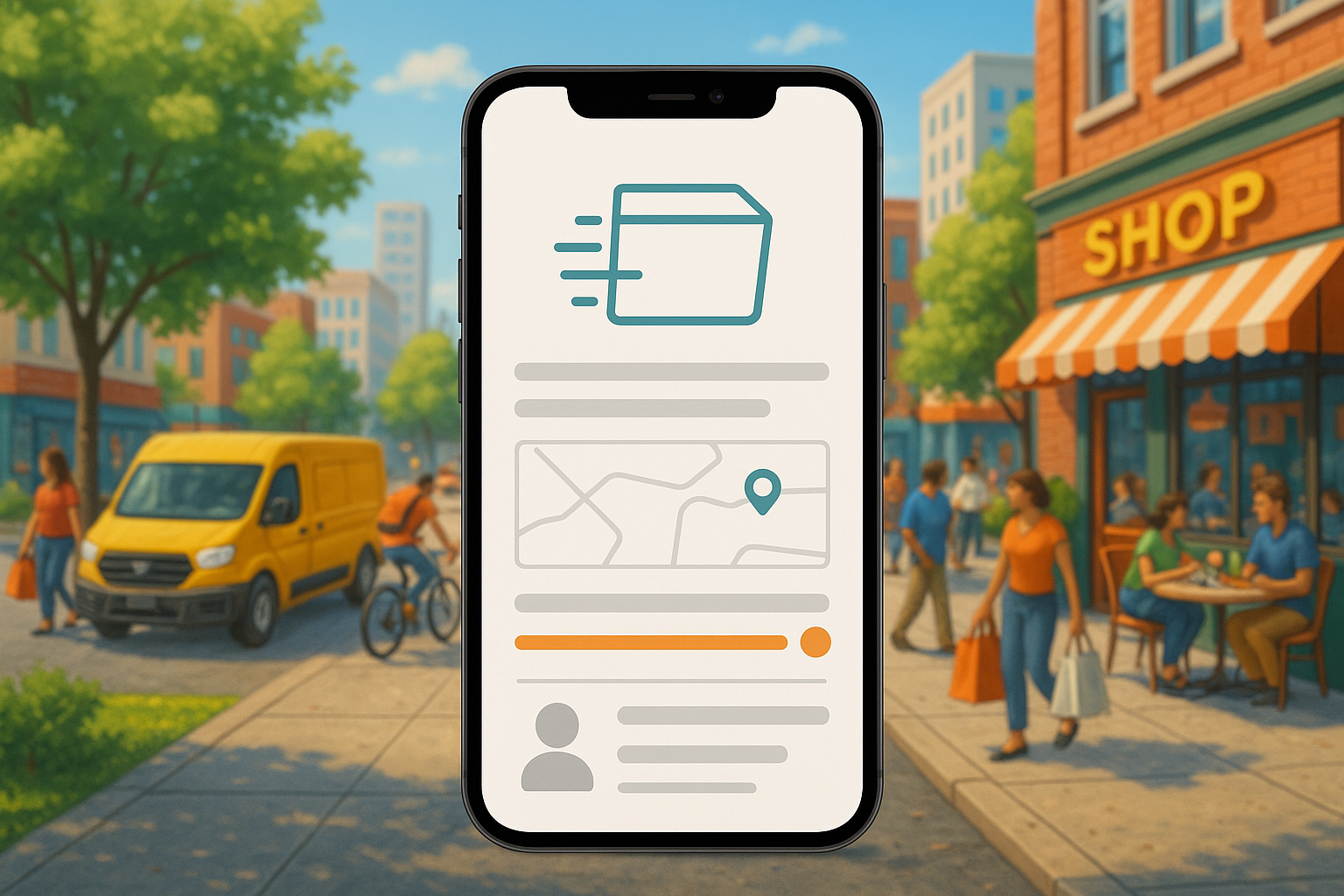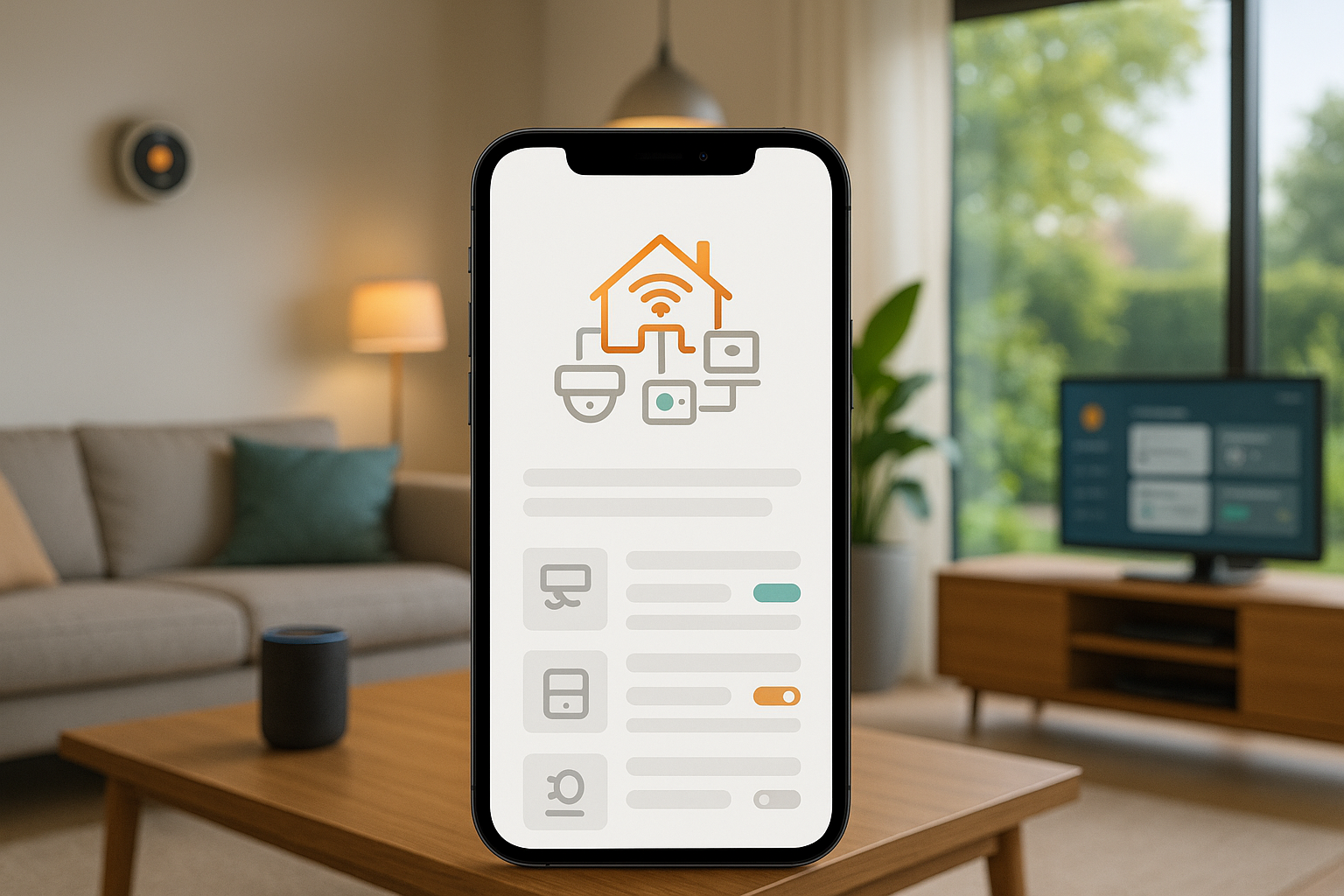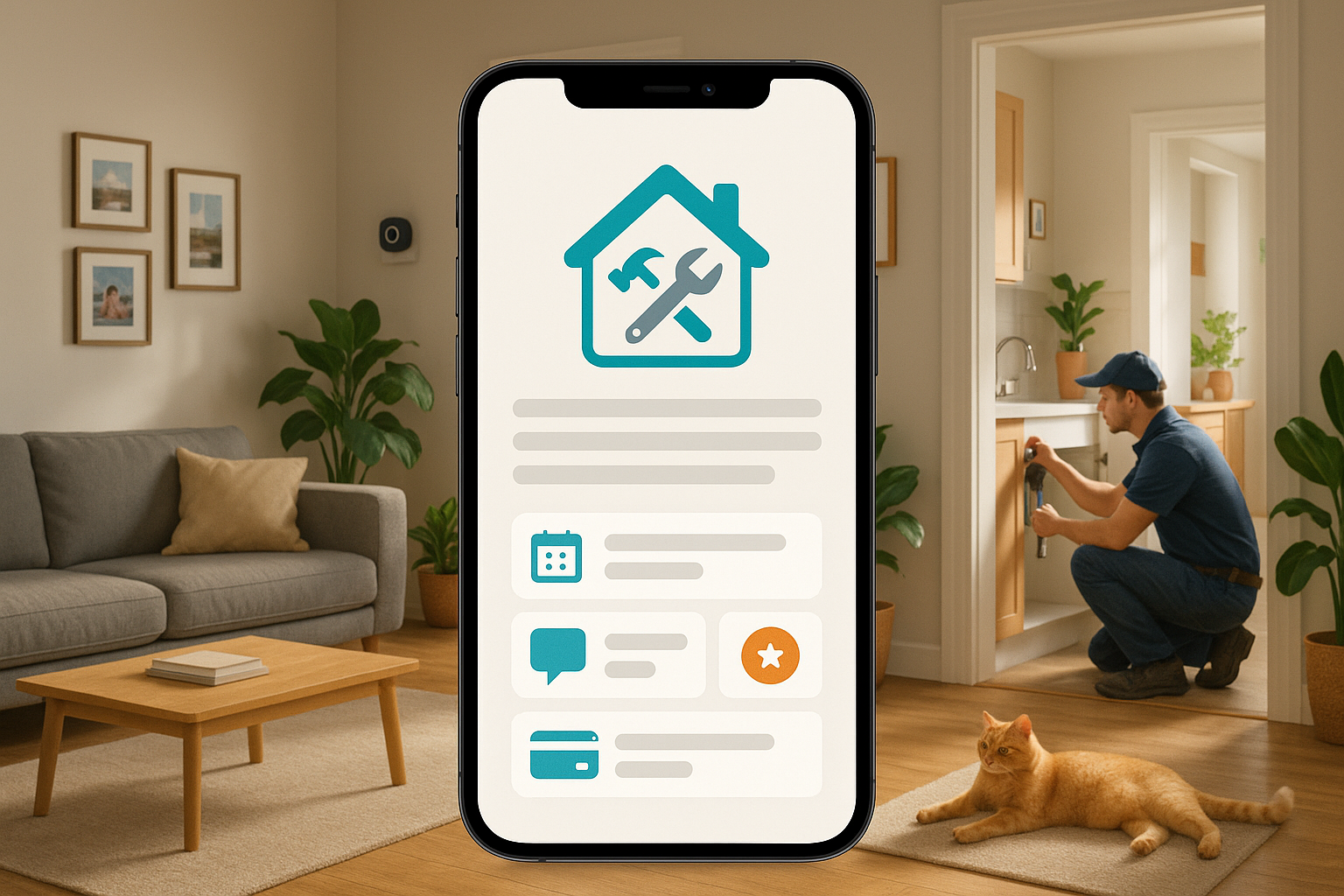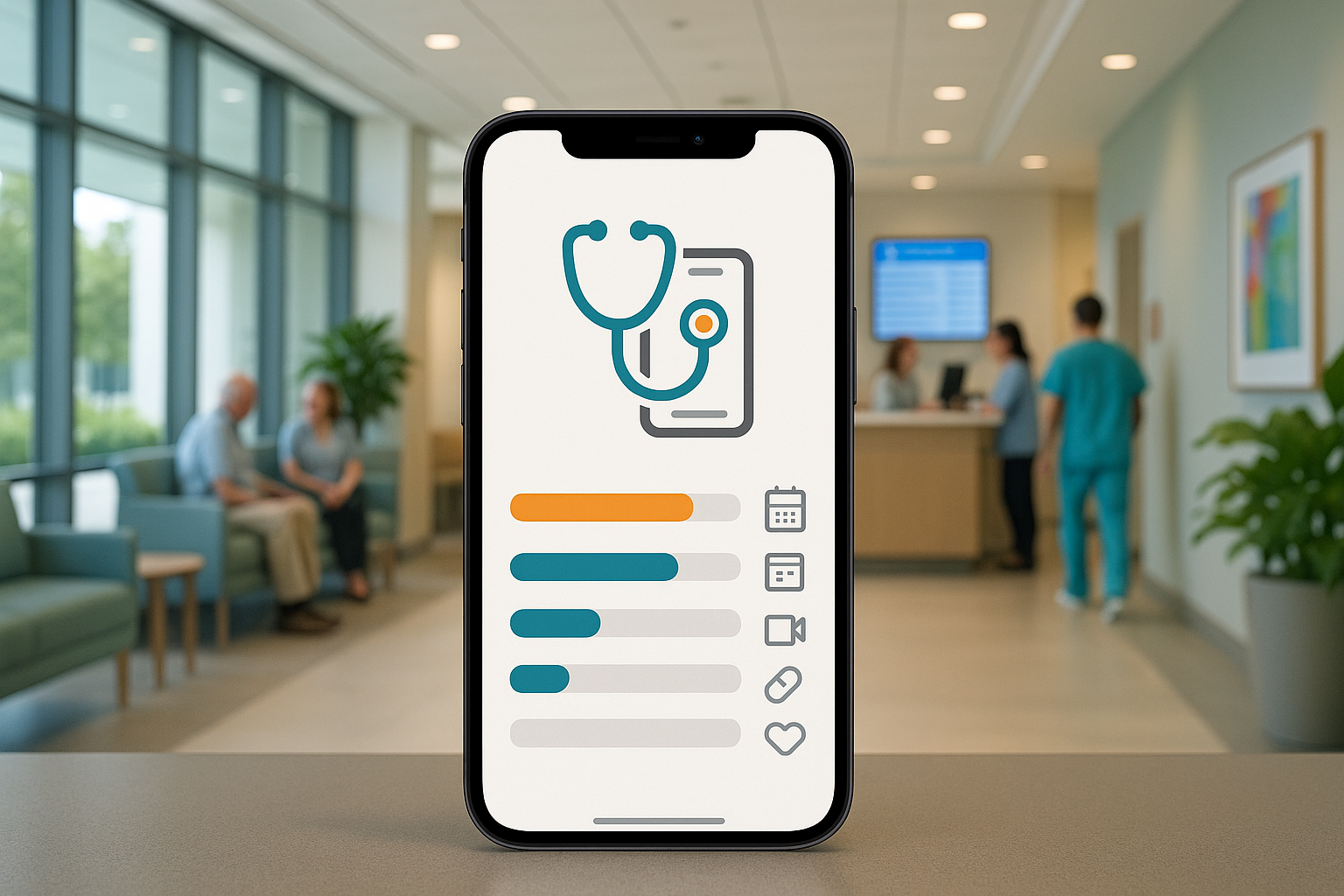Introduction
The on-demand economy has fundamentally reshaped consumer expectations. From groceries and restaurant meals to packages and services, the desire for immediate, at-your-doorstep convenience is no longer a luxury but a baseline standard. This shift has created a fertile ground for entrepreneurs and businesses to launch home delivery applications. However, the path from a brilliant idea to a functional, scalable, and secure delivery app is fraught with complexity. The underlying technology required to manage real-time logistics, ensure data security, and handle unpredictable user demand presents a formidable problem for even seasoned development teams.
This article serves as a comprehensive guide to the world of home delivery app development. We will dissect the core components of these platforms, explore the significant technical challenges that make in-house development a risky proposition, and outline the various business models that power the on-demand industry. Furthermore, we will provide a transparent look at the potential costs and introduce you to the leading development companies that can turn your vision into a reality.
At MetaCTO, a top US AI-powered app development firm, we have over two decades of experience helping startups and established businesses navigate these exact challenges. We understand that building a successful app is about more than just writing code; it’s about creating a strategic, scalable, and monetizable platform. Throughout this guide, we will share insights from our experience, demonstrating how a partnership with an expert agency can help you avoid common pitfalls and launch a product that thrives. We specialize in transforming ambitious ideas into market-ready applications, offering everything from Rapid MVP Development to comprehensive growth and monetization strategies.
What is a Home Delivery App?
At its core, a home delivery app is a digital platform that acts as a logistical and transactional bridge between consumers, businesses, and couriers. It is a sophisticated ecosystem designed to facilitate the ordering, payment, tracking, and fulfillment of goods and services delivered directly to a customer’s location. While the user experience might feel as simple as a few taps on a screen, the backend infrastructure is a complex interplay of several distinct but interconnected software components.
To create a comprehensive platform like UberEats, a development firm must build not one, but four integrated systems:
- The Consumer App: This is the primary interface for the end-user. It’s where customers browse products or services, place orders, make payments, track the delivery status in real-time, and leave reviews. The focus here is on a seamless, intuitive, and engaging user experience.
- The Courier App: This application is for the delivery personnel. It provides them with essential tools to manage their work efficiently, including order notifications, optimized delivery routes, earnings tracking, and communication channels to connect with the customer or merchant.
- The Merchant App: This is the portal for partner businesses, such as restaurants or grocery stores. It allows them to manage their listings, update menus or inventory, accept and process incoming orders, and track their sales and performance on the platform.
- The Admin Panel: This is the central nervous system of the entire operation. It is a powerful dashboard used by the platform owner to oversee and manage all activity. From the admin panel, operators can manage users (customers, couriers, merchants), resolve disputes, handle payments and commissions, analyze data, and monitor the overall health of the ecosystem.
Building these four pieces and ensuring they communicate flawlessly in real-time is the fundamental task of home delivery app development.
Reasons It Is Difficult to Develop a Home Delivery App In-House
Embarking on the journey of building a home delivery app without an experienced partner is a high-stakes endeavor. The technical hurdles extend far beyond simple application development; they venture into the realms of real-time data management, massive scalability, and ironclad security. An in-house team must possess a rare and expensive combination of specialized skills to succeed.
The Challenge of Real-Time Operations and Scalability
A delivery app is a living, breathing system. Unlike static content apps, it must process a constant flow of dynamic information. This presents several major challenges:
- Managing Real-Time Data: This is a major hurdle. The platform must simultaneously track customer orders, courier locations, and merchant inventory, all while providing instant updates to each party. Integrating reliable, real-time order tracking is a common struggle for development teams.
- Algorithmic Complexity: The system cannot simply assign the nearest driver. Optimizing route planning algorithms to account for traffic, order batching, and delivery time windows is a significant challenge that directly impacts efficiency and profitability.
- Handling Peak Demand: Delivery services experience dramatic surges in order volume during peak hours, such as lunch and dinner rushes. A critical challenge is ensuring the app can handle this peak hour traffic without crashing. Inadequate resource management often leads to system failures during these crucial moments, resulting in lost revenue and damaged user trust.
- Scalability Risks: An app architected for a few hundred initial users will likely crumble under the weight of thousands. True scalability must be baked into the core of the platform from day one. Making sure the app can handle a high volume of orders without performance degradation is a persistent challenge that poses immense risks to the business’s long-term viability.
Building an infrastructure that is both responsive in real-time and capable of scaling on demand requires deep expertise in cloud architecture, database management, and performance engineering—skills that are difficult to find and retain in-house.
The Imperative of Security and Privacy
Home delivery apps handle a treasure trove of sensitive information, including user addresses, payment details, and personal data. This makes them a prime target for malicious actors.
- Prominent Security Concerns: Security is not an afterthought; it is a fundamental requirement. Data breaches in the food delivery space often stem from vulnerabilities that could have been identified and remedied with expert oversight and rigorous testing protocols.
- Advanced Feature Complications: As apps evolve to include features like voice ordering and authentication, the security landscape becomes even more complex. Ensuring that voice assistant systems can understand diverse accents and dialects is a technical challenge in itself. Layered on top of this is the critical need to address user privacy concerns inherent in voice authentication, requiring robust data protection and transparent policies.
A single security breach can irrevocably destroy customer trust and lead to severe financial and legal repercussions. A partnership with a firm like ours, which prioritizes security throughout the custom mobile app development lifecycle, is essential to mitigate these risks.
The Complexity of System Integration
A home delivery app is not a monolith; it is a system of systems. The consumer, courier, and merchant apps, along with the admin panel, must operate in perfect harmony.
- Seamless Interconnectivity: Ensuring flawless data flow between all four components of the platform is a significant architectural challenge. A delay or error in one part of the system can create a cascade of failures across the entire user experience.
- Third-Party Integrations: Modern delivery apps must also integrate with a variety of external services. This can include integrating payment gateways, mapping services for route optimization, and even emerging concepts like virtual kitchens, each of which presents its own unique set of integration challenges.
Attempting to orchestrate this complex web of technologies without a dedicated, experienced team is a recipe for delays, budget overruns, and a dysfunctional final product.
Different Types of Home Delivery Apps and Their Business Models
Choosing the right business model is as critical as building the right technology. The model you select will define your revenue streams, operational structure, and relationship with your users. Here are the primary models dominating the on-demand delivery space.
Peer-to-Peer (P2P) Model
The peer-to-peer model is the most straightforward, acting as a simple platform that connects two types of users directly. In the context of delivery, it connects the person performing the delivery with the customer who needs something delivered. The platform’s role is primarily that of a matchmaker, leaving the actual handling of the task up to the individuals involved.
- Revenue: On-demand startups using this model typically generate revenue by charging the “sellers” (the drivers) a percentage of each transaction, sometimes along with a platform usage fee.
- Pros: Simplicity in concept.
- Cons: This model can be difficult to monetize efficiently. Furthermore, startups lose a significant degree of control over the quality and consistency of the service, as they do not directly manage how drivers complete their tasks.
Business-to-Consumer (B2C) Model
This is one of the most popular and lucrative models in the on-demand space, with B2C apps generating the bulk of on-demand revenue. In this model, an established business creates an app for its own customers to order its products for delivery.
A classic example is the Starbucks mobile app. Customers can use the app to order ahead, pay, and have their coffee delivered to their home or office. Interestingly, Starbucks itself doesn’t manage the delivery fleet. Instead, it has partnered with a service like Uber Eats, creating a hybrid model where the B2C app serves as the customer entry point, while a three-sided marketplace handles the logistics.
The Three-Sided Marketplace Model
This is the powerhouse model behind giants like Uber Eats. The platform’s technology connects three distinct parties: the customer, the restaurant (or business), and the delivery driver. It acts as the central hub for the entire transaction.
- Revenue: This model diversifies its revenue streams. Revenue comes from restaurants, which typically pay a commission on each order placed through the platform. It also comes from customers, who are often required to pay a small delivery charge or a cancellation fee.
- Ecosystem: Many customers for these platforms come directly from B2C apps, as seen in the Starbucks and Uber Eats partnership. This creates a powerful, interconnected delivery ecosystem.
The Subscription Model
To boost revenue growth and customer loyalty, a growing number of on-demand services are adopting a subscription model. With this approach, companies offer to make an unlimited number of deliveries for a fixed monthly price.
- Examples: Instacart and Postmates are well-known examples, offering unlimited grocery delivery for a set monthly fee.
- Effectiveness: The long-term success of this model depends on two key factors: how frequently subscribers actually use the service, and the total number of customers who are willing to subscribe in the first place. This model is a key focus of our App Monetization services, where we help clients analyze user behavior to create profitable subscription tiers.
Business-to-Business (B2B) Model
Unlike the other models that cater to individual consumers, B2B on-demand companies cater exclusively to other businesses.
- Examples: This includes apps like ezCater (on-demand catering for offices), Spiffy (on-demand car washes for employees at office parks), and Cargomatic (on-demand access to trucks and shippers for logistics).
- Advantages: B2B startups have several distinct advantages. They sell in bulk and therefore do not need the same massive volume of customers as a B2C company to remain profitable. This often allows them to generate revenue faster and positions them to scale more quickly.
Cost Estimate for Developing a Home Delivery App
Understanding the financial investment required is a critical step in planning your venture. The cost to develop a robust home delivery app is significant, largely because, as we’ve established, you are not building a single app but a complex, multi-faceted system.
Based on industry analysis, the total cost to develop a delivery app platform from scratch typically revolves around $70,000 to $150,000. This figure is derived from an estimated development workload of 2,800 to 3,000 hours, billed at an average rate of $50 per hour.
The total cost is a sum of its parts. A full-fledged platform like UberEats requires a consumer app, a courier app, a merchant app, and an admin panel. The development timeline for each of the three main apps (customer, courier, merchant) is approximately 3.5 months, with a team that usually includes at least two developers working on the native iOS app, the native Android app, and the backend software that powers them. The admin panel, while less complex, still requires about two developers and takes slightly more than 8 weeks to complete.
Here is a typical breakdown of the development time and starting costs for each component:
| Component | Development Time (hours) | Starting Cost |
|---|---|---|
| Customer App | ~700-900 | $35,000 |
| Courier App | ~700-900 | $35,000 |
| Merchant App | ~700-900 | $35,000 |
| Admin Panel | 400-500 | $10,000 |
It is important to note that the entire process involves several key stages before and during development, including a Discovery Stage to define scope, UI/UX Design to create the user experience, and the core Software Development itself.
Fortunately, there are strategies to manage these costs, especially for startups. Proceeding with a ready-to-use solution for the Admin Panel, particularly for a Minimum Viable Product (MVP), can significantly reduce the initial software development cost. It may also be cheaper to split admin functionality into separate services, such as using a third-party chat service for support instead of building one from scratch. At MetaCTO, our Rapid MVP Development service is specifically designed around these principles, allowing you to launch a core version of your app in 90 days to validate your idea and secure funding before committing to the full feature set.
Top Home Delivery App Development Companies
Selecting the right development partner is the single most important decision you will make. You need a team that not only possesses the technical prowess but also offers strategic guidance to ensure your app succeeds in a competitive market.
1. MetaCTO
As a premier, US-based mobile app development agency, we at MetaCTO bring a unique, AI-enabled approach to building, growing, and monetizing applications. With 20 years of app development experience, over 120 successful projects launched, and more than $40M in fundraising support secured for our clients, we are more than just developers; we are strategic partners invested in your success.
Our process is built on a holistic, five-step framework designed to take you from concept to a thriving business:
- Validate: We turn your idea into an MVP quickly, helping you test the market, collect real feedback, and secure funding on a tight budget and timeline.
- Build: We handle the entire process—from design and build to launch—ensuring your app is market-ready and delivers a smooth user experience from day one.
- Grow: We use advanced analytics and A/B testing to optimize user onboarding, engagement, and retention, helping you build a loyal customer base.
- Monetize: We work with you to implement the most effective monetization strategies, whether through subscriptions, commissions, or other revenue models.
- Evolve: As your business scales, we ensure your app evolves with it, upgrading your technology stack to stay competitive.
Our expertise in AI Development is particularly relevant for the on-demand delivery space, where AI can be leveraged to tackle complex challenges like route optimization, demand prediction, and personalization. As our client Sean Richards, Founder & CEO of RGB Group, stated, “MetaCTO brought our vision and the design to life in a pretty phenomenal experience.” We are dedicated to building your app the right way, from day one.
2. AppsRhino
AppsRhino is another top on-demand delivery app development company with a global presence and a strong portfolio in the delivery sector. They are known for providing customizable solutions that cater to both startups and established enterprises.
- Locations/Headquarters: Chicago, Illinois, USA; Nigeria; Canada; UK; and South Africa.
- Industries Served: AppsRhino has specific expertise in building apps for food delivery, alcohol delivery, and grocery delivery.
- Unique Selling Points: Their key differentiators include a promise of fast time-to-market, flexible pricing models, customizable and white-label solutions, and deployment flexibility on any server of the client’s choice. They also offer multiple payment gateway integrations and dedicated post-launch support.
- Technology Stack Expertise: Their teams are proficient in a wide range of technologies, including backend (Node.js, Python, PHP), frontend (AngularJS, React.js), and mobile development (Flutter, React Native).
- Track Record: AppsRhino has been trusted by over 200 brands, and testimonials from more than one hundred past clients highlight the personalized experience they provide throughout the development process. Their notable case studies include MedPlus, Skop, and Weez on Wheels.
Conclusion
The home delivery market is undeniably lucrative, but success demands more than just a good idea. As we have explored, the journey is paved with significant technical challenges, from managing real-time data and ensuring scalability to fortifying your platform against security threats. Navigating the various business models to find the right fit for your venture adds another layer of strategic complexity, and the substantial financial investment requires careful planning and execution.
This guide has aimed to provide a clear and realistic overview of what it takes to build a home delivery app. We’ve dissected the essential components, highlighted the difficulties of going it alone, detailed the primary business models, and broken down the associated costs. The key takeaway is that building a successful delivery platform requires a deep technical partnership. It requires a team that understands the nuances of the market, the intricacies of the technology, and the strategic path to long-term growth and profitability.
Building an app is a major undertaking, but you don’t have to do it alone. Our team at MetaCTO is with you every step of the way, from validating your initial idea to scaling a profitable business.
Talk with a Home Delivery app development expert at MetaCTO today to get a clear plan for bringing your vision to life.






